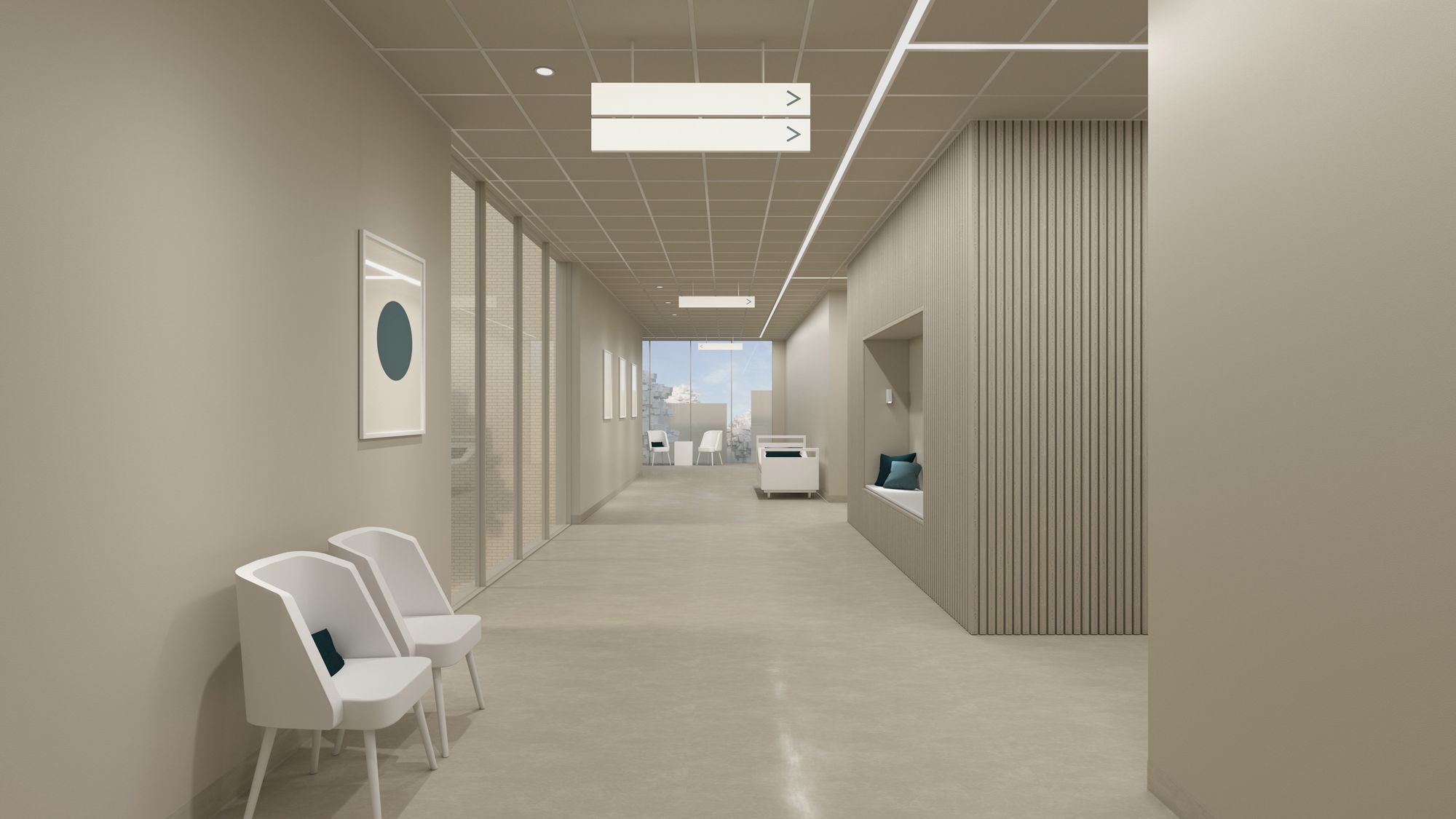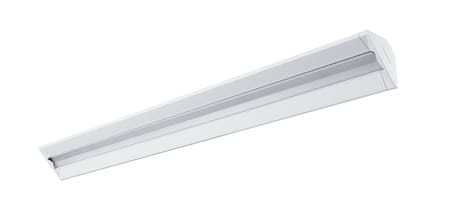Corridor
Corridors are not only communication areas. They can also be distinct walkways to aid orientation in larger healthcare facilities. A good communication area is intended to facilitate movement and the flow of people, as well as provide structure within the building.

Space for movement and orientation
Corridors and communication areas in hospital environments are designed to make it easier for healthcare staff and patients alike to both navigate and move about the premises. Here, lighting plays an important role in emphasising the different functions of a facility. A well-designed lighting system ensures safety and security for patients, staff and visitors, both day and night.
One important consideration for corridor lighting is that it should not dazzle patients on gurneys being moved between wards or units. For staff, relatively high brightness is important to provide a clear view of the patient and the surroundings. In some cases, a corridor may also be an area where staff need to perform certain healthcare tasks. If so, appropriate lighting, with the right lux values, is central to ensuring patient safety when administering such care.
There are many different corridor types: open communication areas, gathering places, and more traditional corridors, perhaps equipped with noticeboards or reception areas. The following describes how these different spaces can be effectively illuminated.
Traditional corridors
Light optimises our spatial awareness and offers a sense of safety and security. In more confined spaces, such as corridors, we require lighting that does not produce glare or shine into adjacent rooms. Recessed linear luminaires help to signal direction and guide flows in corridors. We recommend lighting with at least 100 lx in traditional corridors. Vertical lighting should also be considered for walls, noticeboards and reception areas. Daytime, the average lighting level should be 200 lx in wards where corridors are used for workstations and seating areas as well as passage.
Open communication areas
If an open communication area is to be used effectively, as a waiting room for instance, the lighting requirements differ. Recessed luminaires provide pleasant and subdued light, and a combination of suspended luminaires increases the variation in the light environment and contributes to spatiality. Add wallwashers along the walls to create the right ambient lighting. We recommend 200 lx for improved visual communication in public areas and waiting rooms for patients and relatives.
Lighting control in corridors
For these types of areas, we recommend the Organic Response control system. We have equipped each luminaire with a sensor that detects presence and absence, with wireless communication between the luminaires. This is so that we can optimise the lighting in terms of safety.
